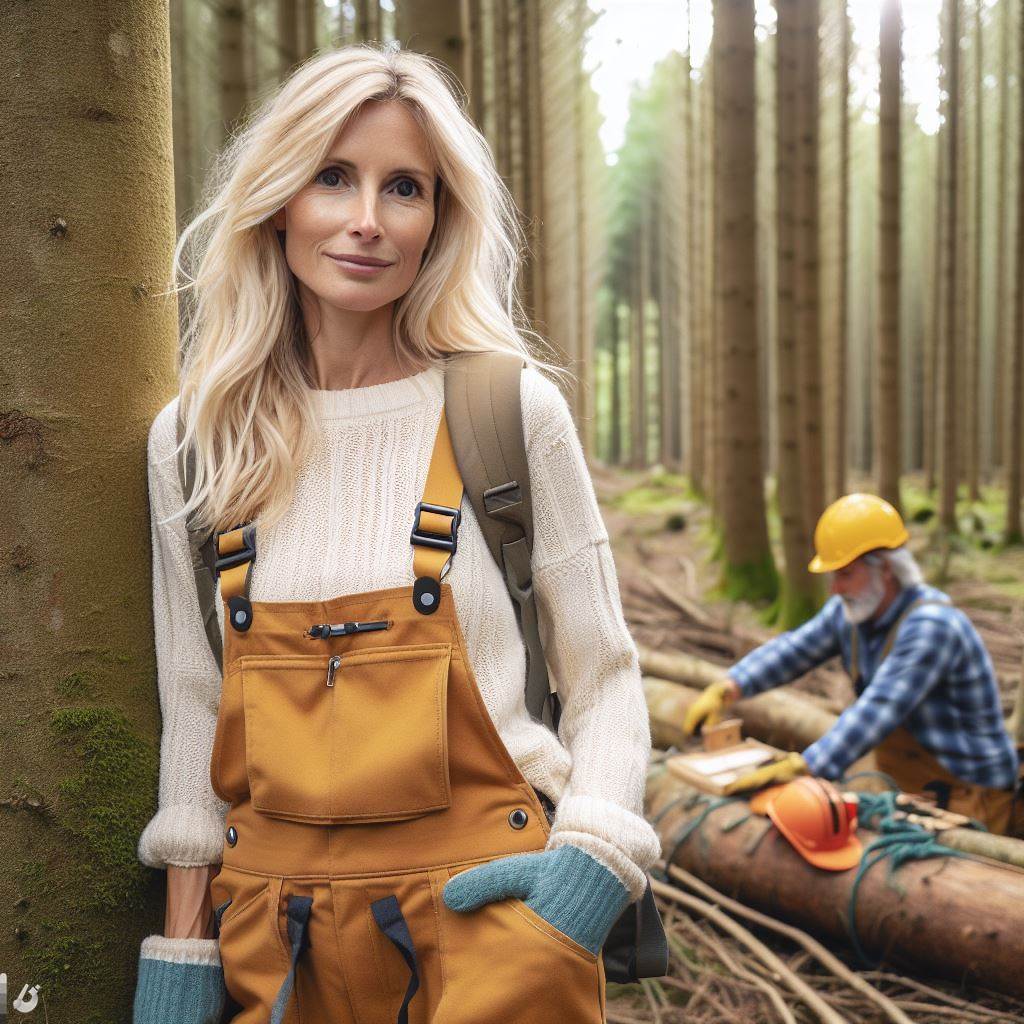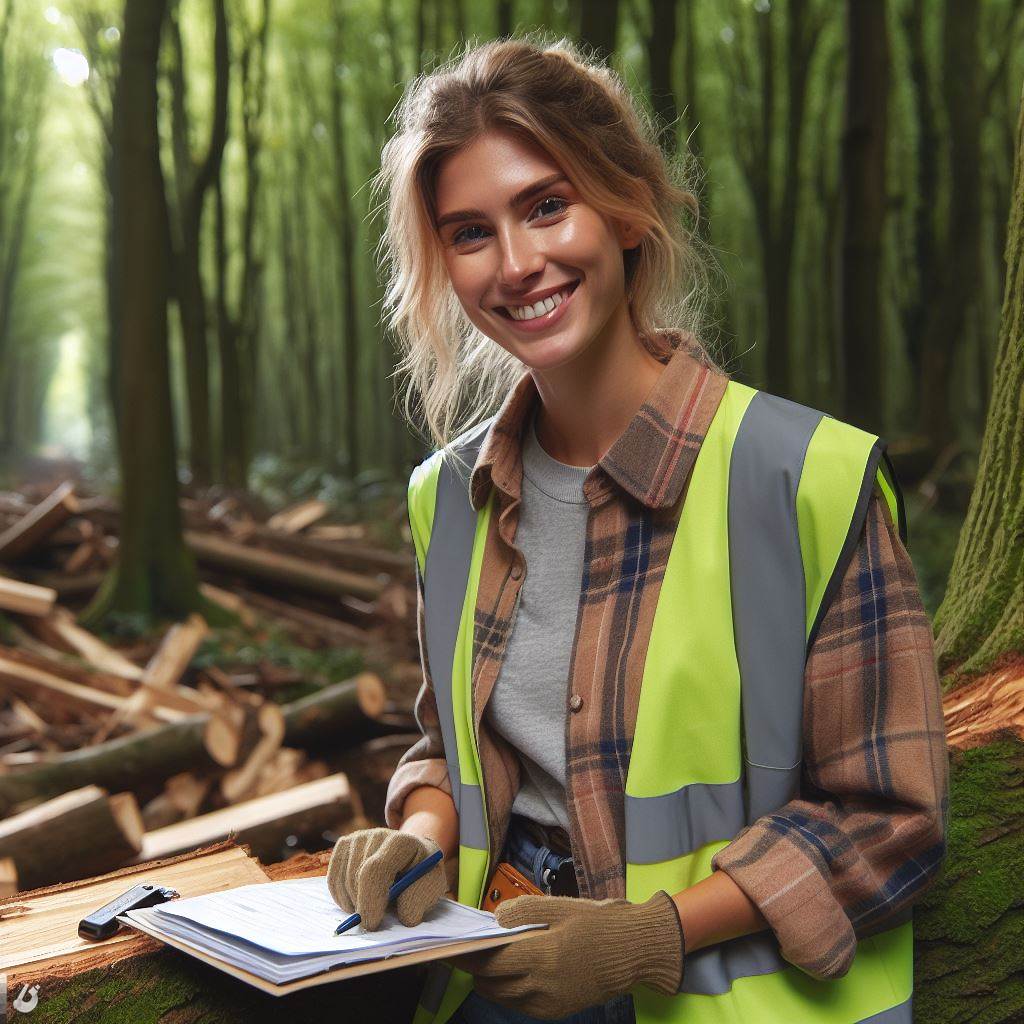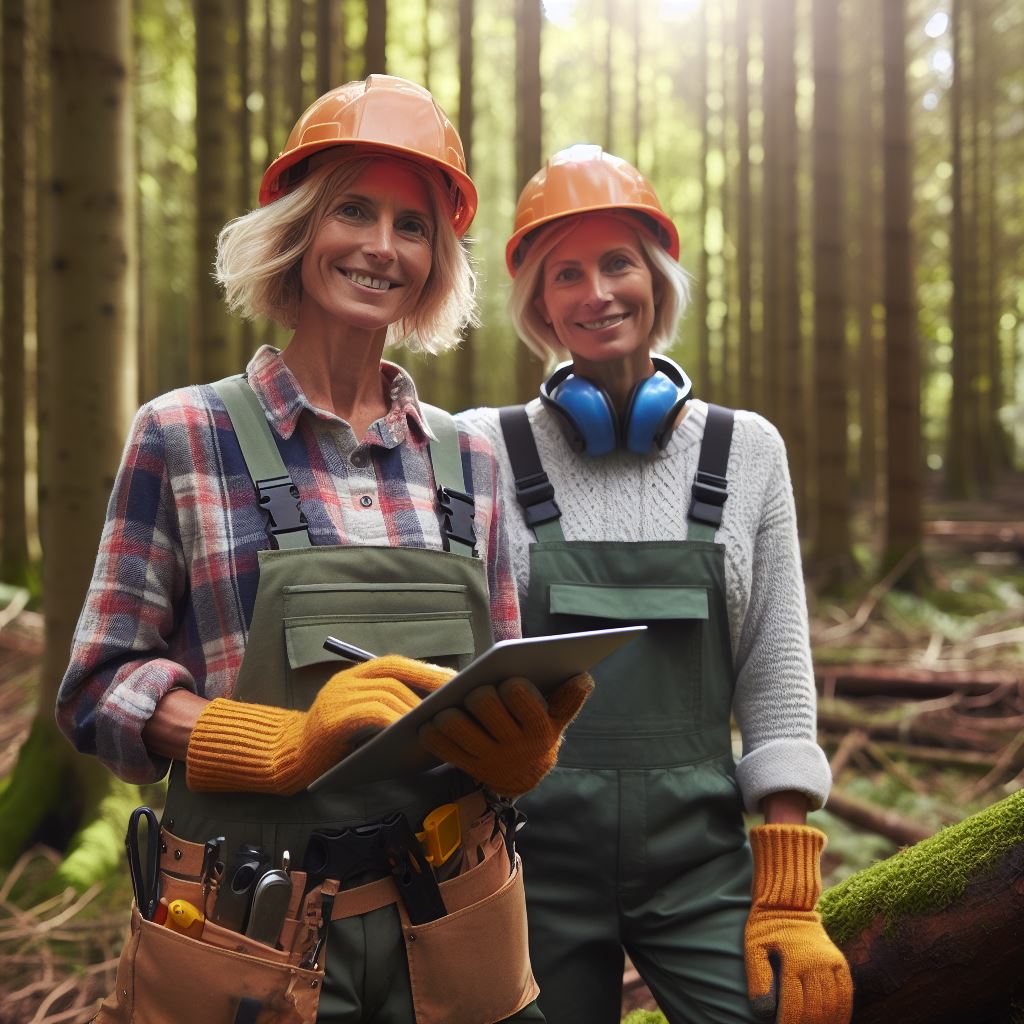Introduction
Urban arboriculture, the study and management of trees in urban areas, has gained significant importance and widespread interest in recent years.
This blog section will delve into the challenges and rewards associated with this field.
The Challenges of Urban Arboriculture
- Limited space for tree growth and development poses a significant challenge in urban areas.
- Urban trees face numerous environmental stressors, including air pollution, soil compaction, and limited access to water.
- High urban temperatures and the urban heat island effect increase stress on trees and impact their health.
- Tree selection and placement must be carefully considered to ensure compatibility with urban infrastructure, such as roads and buildings.
- Regular pruning and maintenance are necessary to promote tree health and mitigate potential hazards.
The Rewards of Urban Arboriculture
- Urban trees offer numerous social and psychological benefits to city dwellers, including improved mental health and well-being.
- Properly managed urban forests can enhance air quality by filtering pollutants and reducing carbon dioxide levels.
- Trees help regulate urban temperatures, mitigate the urban heat island effect, and reduce energy consumption.
- Urban trees provide wildlife habitats and support biodiversity, contributing to a healthier urban ecosystem.
- Well-designed urban green spaces with healthy trees attract residents, enhance property values, and promote community cohesion.
Basically, urban arboriculture presents unique challenges, but the rewards it provides are invaluable.
By understanding and addressing these challenges, we can create vibrant, sustainable green spaces that improve urban environments and enrich the lives of city residents.
Overview of Urban Arboriculture
Urban arboriculture refers to the study and management of trees and shrubs in urban environments.
It plays a crucial role in maintaining the health and well-being of cities by addressing various challenges and reaping rewarding benefits.
Significance of Urban Arboriculture
- Urban arboriculture is essential because it helps in improving the quality of life in cities.
- It contributes to the aesthetic appeal of urban landscapes, creating green spaces for people to enjoy.
- Urban trees help reduce air pollution by absorbing carbon dioxide and releasing oxygen.
- Shade provided by trees can help reduce energy consumption by lowering the need for air conditioning.
- They act as noise barriers, absorbing sound and creating a quieter environment in busy urban areas.
Primary Objectives of Urban Arboriculture
- To preserve and enhance the urban tree canopy by implementing proper tree care practices.
- To ensure the safety of people and property by managing the risks posed by urban trees.
- To promote the health and vitality of urban trees, reducing the incidence of pests and diseases.
- To promote sustainable urban forestry practices, including tree planting, maintenance, and removal.
- To educate and raise awareness about the importance of urban trees and their benefits.
Contributions of Urban Trees to City Health
- Urban trees improve air quality by filtering pollutants and particulate matter from the atmosphere.
- They help regulate urban temperatures by providing shade and reducing the heat island effect.
- Urban trees absorb stormwater runoff, reducing the risk of flooding and protecting water quality.
- They provide habitat and food sources for wildlife, enhancing urban biodiversity.
- Urban trees promote mental well-being by providing spaces for recreation and relaxation.
The Role of Arborists in Managing Urban Trees
- Arborists are trained professionals specializing in the care and maintenance of trees.
- They assess and diagnose tree health issues, providing appropriate treatments and interventions.
- Arborists remove hazardous trees and perform pruning to ensure public safety.
- They implement tree planting programs, selecting suitable species for urban environments.
- Arborists educate communities about proper tree care and the benefits of urban trees.
In review, urban arboriculture plays a crucial role in maintaining healthy and vibrant cities.
By preserving and caring for urban trees, it contributes to the well-being of communities, the environment, and the overall urban ecosystem.
Arborists, with their expertise and knowledge, are at the forefront of managing and nurturing urban trees for the benefit of present and future generations.
Read: The Future of Arboriculture in the UK
Challenges in Urban Arboriculture
The unique challenges faced by arborists in urban settings are diverse and demanding
- One of the major issues is the limited space available for tree growth and development.
- Urban areas are densely populated, leaving little room for planting and maintaining trees.
- Infrastructure conflicts, such as underground utilities and overhead power lines, pose significant challenges.
- Arborists must carefully plan tree placement to avoid conflicts with infrastructure and ensure public safety.
- Pollution is another concern in urban environments, negatively impacting the health of urban trees.
- Air pollution, soil contamination, and chemical exposure from urban activities can harm tree vitality.
Impact of climate change on urban trees and arboriculture practices
Climate change poses a significant threat to urban trees and arboriculture practices:
- Increasing temperatures, extreme weather events, and shifting precipitation patterns affect tree health.
- Urban trees must adapt to changing conditions, with arborists playing a crucial role in their survival.
Overcoming Challenges in Urban Arboriculture
Most importantly, arborists face a myriad of challenges in urban settings. Limited space, infrastructure conflicts, pollution, and climate change all pose significant obstacles.
Overcoming these challenges requires specialized knowledge, adaptability, and collaboration with other professionals.
Continuous learning, efficient resource management, and community engagement are vital for successful urban arboriculture.
By addressing these challenges head-on, arborists can ensure the health and long-term survival of urban trees, providing numerous rewards for both people and the environment.
Personalized UK Career Consulting
Receive tailored career guidance designed just for you. Get actionable steps and expert support to boost your career in 1-3 days. Take control of your career now.
Get Started- The need for specialized knowledge and skills in urban arboriculture cannot be overstated.
- Arborists must understand the unique challenges and constraints of urban environments.
- They need expertise in tree selection, planting techniques, and ongoing maintenance practices.
- Urban arborists must also stay updated on the latest research and best management practices.
- Efficient use of resources, such as limited water availability, is a critical consideration for arborists.
- Pruning, fertilization, and pest control strategies must be adapted to meet the needs of urban trees.
- Effective communication and collaboration with other professionals, such as city planners and engineers, are essential.
- Arborists must work together with these stakeholders to create sustainable and resilient urban landscapes.
- Continuous learning and professional development are necessary for urban arborists to stay ahead.
- They must actively seek knowledge, attend workshops, and participate in industry conferences.
- Building strong community support and awareness for urban trees is also crucial.
- Arborists can engage in public outreach and education to promote the value of urban forests.
- By involving the community, arborists can create a shared sense of responsibility for urban tree care.
Rewards of Urban Arboriculture
- Urban trees and green spaces provide numerous benefits to the environment and communities.
- Urban arboriculture enhances the well-being and quality of life for city dwellers.
- Increased property values and energy savings are some of the economic benefits of urban trees.
- Urban arboriculture contributes to sustainable and resilient cities.
Urban arboriculture is the study and management of trees and shrubs in urban areas.
With the increasing urbanization and population growth, the importance of urban arboriculture has become more evident.
Urban trees and green spaces offer various rewards for both the environment and city residents.
Benefits of Urban Trees and Green Spaces
Urban trees provide numerous benefits to the overall well-being of cities. They act as natural air filters, absorbing air pollutants and reducing smog.
The shade provided by trees helps to lower temperatures, mitigating the urban heat island effect.
In addition, urban trees play a crucial role in managing stormwater runoff. They absorb rainfall, reducing the strain on stormwater systems, and minimizing the risk of flooding.
The root systems of trees also help prevent soil erosion and stabilize slopes.
Furthermore, the presence of trees and green spaces in urban areas has a positive impact on mental health.
Research has shown that being surrounded by nature reduces stress, improves mood, and increases overall happiness.
Enhancing Well-being and Quality of Life
Urban arboriculture significantly contributes to the well-being and quality of life for city dwellers. The beauty and aesthetics of urban trees create a sense of pride and identity in communities.
They provide peaceful and tranquil areas for relaxation, recreation, and social gatherings.
Trees also play a vital role in urban wildlife habitat. They provide shelter and food sources for birds, insects, and other animals, boosting biodiversity within cities.
The presence of wildlife adds to the overall charm and appeal of urban environments.
Economic Benefits of Urban Trees
The economic benefits of urban trees are substantial. Studies have shown that properties with mature trees have higher market values compared to those without.
Trees increase curb appeal, creating desirability and attracting potential buyers.
Your Dream Job Starts with a Perfect CV
Get a tailored CV and cover letter that captures your unique strengths and stands out in your industry. Let us help you make an unforgettable first impression.
Get StartedIn addition, urban trees contribute to energy savings. Properly placed trees can provide shade and reduce the need for air conditioning, resulting in lower energy consumption and utility bills.
This energy efficiency not only benefits individual property owners but also reduces the overall demand on energy resources.
Contributing to Sustainable and Resilient Cities
Urban arboriculture plays a vital role in building sustainable and resilient cities. Trees and green spaces contribute to urban biodiversity, supporting insect pollinators and other wildlife.
This biodiversity is crucial for the overall health and functioning of ecosystems.
Furthermore, urban trees sequester and store carbon dioxide, helping to mitigate the effects of climate change.
They also provide shade, reducing the urban heat island effect and decreasing the need for energy-intensive cooling systems.
Urban arboriculture is a key component of urban planning and design.
By incorporating trees and green spaces into cities, we can create more sustainable, livable, and resilient environments for future generations.
Read: Aquatic Health Management by UK Experts

You Might Also Like: Navigating UK Agri-Policies: A Manager’s Guide
Learn More: Essential Skills for UK Agri-Managers in 2024
Skills and Training for Urban Arboriculture
Urban arboriculture is a specialized field that requires specific competencies and qualifications for a successful career.
Core competencies needed in this field
Knowledge of tree biology
Understanding the biology of trees is crucial for urban arborists. This includes tree identification, anatomy, physiology, and growth patterns.
Tree assessment and risk management
Arborists must have the ability to assess tree health and determine potential risks. They should know how to identify symptoms of diseases, pests, and structural issues.
Pruning and tree care techniques
Proficiency in pruning and tree care methods is essential. Arborists need to know the correct techniques for promoting tree health, improving tree structure, and ensuring tree safety.
Optimize Your LinkedIn for Success
Boost your LinkedIn profile with a professional bio, keyword-rich headline, and strategic recommendations that attract recruiters. Stand out from the crowd and get noticed.
Optimize NowTree planting and transplanting
Urban arborists should possess knowledge about proper tree planting and transplanting practices.
This includes selecting suitable tree species for urban environments and ensuring proper planting techniques.
Tree preservation and urban planning
Understanding urban development and its impact on trees is vital. Arborists need to be knowledgeable about urban planning, zoning regulations, and tree preservation ordinances.
Climbing and rigging
As part of their work, arborists often need to climb trees using specialized climbing techniques and equipment.
They should also be skilled in using rigging systems to safely lower tree limbs or remove entire trees.
Importance of formal education and certification
Formal education and certification play a significant role in establishing credibility and expertise in urban arboriculture.
Formal education
Pursuing a degree or diploma in arboriculture, horticulture, or forestry provides a solid foundation.
These programs offer in-depth knowledge of tree care, tree biology, and urban forestry practices.
Certification
Obtaining industry-recognized certifications enhances an arborist’s professional standing.
Certifications such as the International Society of Arboriculture (ISA) Certified Arborist or Tree Risk Assessment Qualified (TRAQ) demonstrate expertise and commitment to continuing education.
Various training programs and qualifications available
There are various training programs and qualifications available for those interested in a career in urban arboriculture.
Apprenticeships
Many arborists start their careers as apprentices, working under experienced professionals. Apprenticeships offer hands-on training and mentorship opportunities.
Continuing education courses
Arborists can take advantage of workshops and courses offered by professional organizations like the ISA. These courses cover topics such as advanced tree pruning techniques, tree risk assessment, and tree biology.
On-the-job training
Many skills required for urban arboriculture can be acquired through on-the-job training. Working alongside experienced arborists allows for practical application of knowledge and the development of practical skills.
Resources and organizations that support professional development in this field
To support professional development in this field, several resources and organizations are available.
- International Society of Arboriculture (ISA): ISA provides educational resources, networking opportunities, and certification programs for arborists worldwide.
- Tree Care Industry Association (TCIA): TCIA offers educational programs, conferences, and safety guidelines to promote excellence in tree care.
- Urban Forestry Today: This online resource offers webinars, videos, and articles on various urban forestry topics, including arboriculture.
- State and local arboretums: Many cities have arboretums or urban forestry departments that offer educational programs and resources for arborists.
Overall, a career in urban arboriculture requires a diverse set of skills and continuous training. Formal education, certifications, and hands-on experience are essential for success in this field.
Utilizing available resources and organizations can support professional development and keep arborists updated with the latest practices and advancements in urban arboriculture.
Read: Impact of Climate Change on UK Trees
Career Opportunities in Urban Arboriculture
Urban arboriculture is a growing field with a wide range of career options and job prospects.
Whether you have a passion for trees, enjoy being outdoors, or are interested in environmental conservation, there are numerous opportunities to explore in urban arboriculture.
We will further discuss the diverse range of career options available in this field, the potential for growth, the importance of networking, and provide examples of job roles in both the private and public sectors.
Diverse range of career options in urban arboriculture
The field of urban arboriculture offers a variety of career paths that cater to different interests and skill sets.
From tree care technicians and arborists to urban forestry managers and tree inspectors, there are numerous roles to consider.
Each role requires a unique set of skills and knowledge, allowing individuals to specialize in specific areas within the field.
Job prospects and potential growth in this field
With the increasing awareness of the importance of trees in urban environments, the demand for professionals in urban arboriculture is on the rise.
Job prospects in this field are expected to grow steadily in the coming years, providing ample opportunities for individuals pursuing careers in arboriculture.
As cities continue to expand and more emphasis is placed on green spaces and urban forestry, the need for skilled arborists will only increase.
Importance of networking and professional connections
Networking plays a crucial role in the career development of arboriculture professionals.
Building strong connections with industry experts, attending seminars, and joining professional organizations keep individuals updated and open doors to job opportunities.
It is important to actively engage with others in the field to build a strong professional network.
Examples of arboriculture job roles in private and public sectors
In the private sector, arboriculture professionals can work for tree care companies, landscape architects, or consulting firms.
They may perform tasks such as tree pruning, tree removal, and providing advice on tree planting and maintenance.
In the public sector, arborists can find employment with municipal governments, parks departments, or conservation organizations.
They are responsible for managing urban forests, conducting tree inventories, and ensuring the health and safety of trees in public spaces.
In addition to these roles, there are opportunities to work as educators, researchers, or even start one’s own arboriculture business.
The field of urban arboriculture is diverse and offers a range of possibilities for individuals with a passion for trees and the environment.
Therefore, urban arboriculture offers a plethora of career options with potential for growth.
By exploring the diverse range of career paths and taking advantage of networking opportunities, individuals interested in this field can pave the way for a rewarding and fulfilling career in urban arboriculture.
Read: Aquaculture Equipment Essentials in the UK
Conclusion
Importance of urban arboriculture in creating sustainable and livable cities
In essence, urban arboriculture plays a vital role in creating sustainable and livable cities. It is a profession that comes with its challenges but also offers rewarding experiences.
The importance of urban arboriculture cannot be overstated. Trees provide numerous environmental, economic, and social benefits to urban areas. ]
They improve air quality, reduce energy consumption, and mitigate the urban heat island effect.
However, urban arboriculture comes with its fair share of challenges. Limited space, soil compaction, pollution, and pest infestations are just a few of the obstacles arborists face in maintaining healthy trees.
Challenges and rewards associated with this profession
Despite the challenges, the rewards of urban arboriculture are immense.
The satisfaction of preserving and enhancing urban green spaces, the joy of seeing trees flourish, and the positive impact on communities make this profession highly fulfilling.
Encouraging readers to consider urban arboriculture as a potential career path
For those considering a career in arboriculture, urban settings offer a unique and exciting opportunity.
The demand for skilled arborists is on the rise, with job prospects expected to grow significantly in the coming years.
To further explore urban arboriculture, individuals can seek training and educational opportunities. There are various certifications, courses, and workshops available to gain knowledge and practical skills in the field.
To summarize, urban arboriculture is a profession that not only benefits the environment but also contributes to the overall well-being of cities and its inhabitants.
We encourage readers to consider this rewarding career path and take action to learn more and explore training opportunities.
Together, we can create greener, healthier, and more sustainable urban spaces.
[E-Book for Sale]
500 Cutting-Edge Tech Startup Ideas for 2024 & 2025: Innovate, Create, Dominate
$19.99 • 500 Tech Startup Ideas • 62 pages
You will get inspired with 500 innovative tech startup ideas for 2024 and 2025, complete with concise descriptions to help you kickstart your entrepreneurial journey in AI, Blockchain, IoT, Fintech, and AR/VR.




